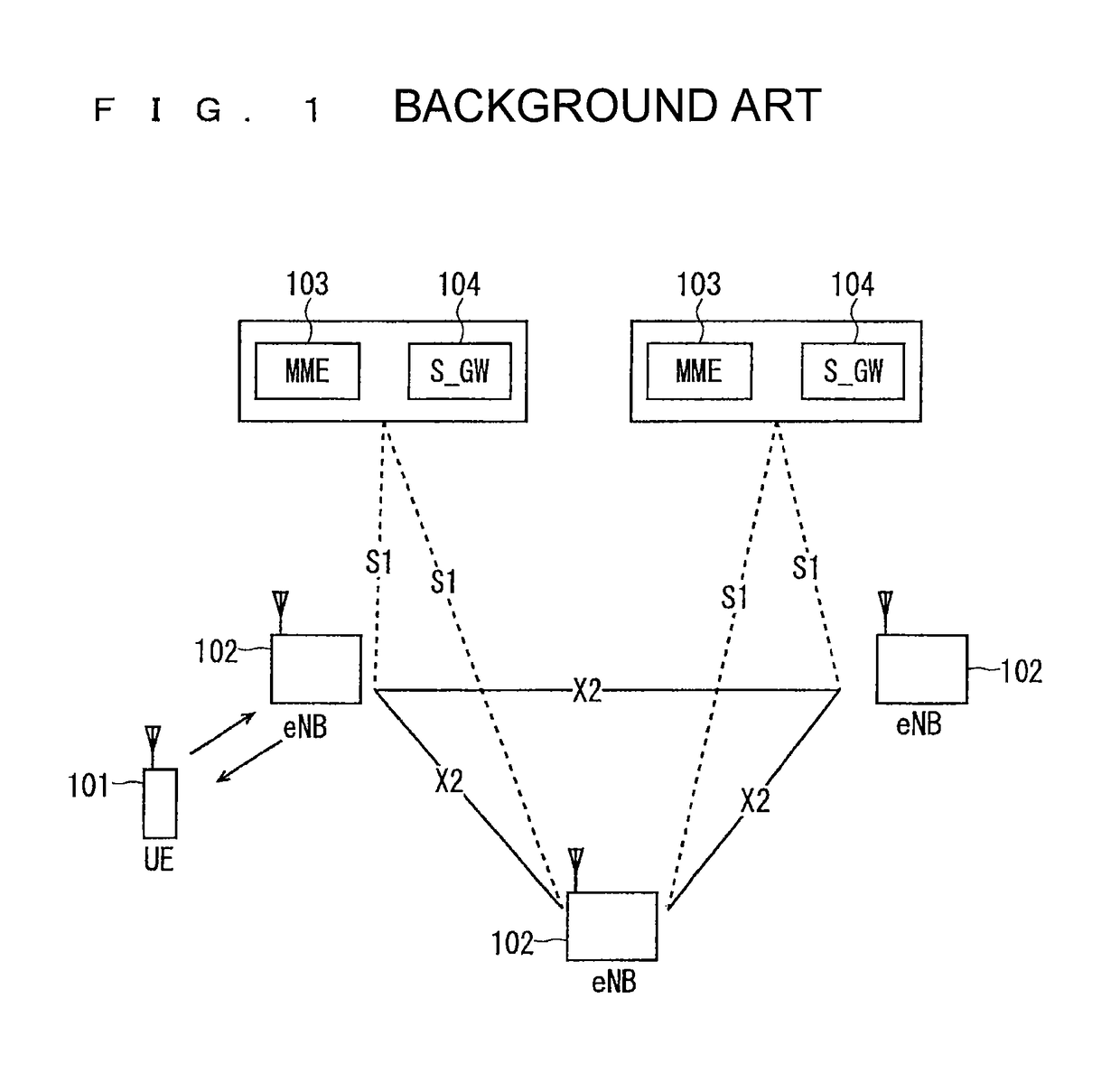Mobile communication system
a communication system and mobile technology, applied in the field of mobile communication systems, can solve problems such as system performance degradation and collision risk of rach, and achieve the effects of reducing the load of user equipment devices, simplifying search operation, and reducing the self-interference of relay devices
- Summary
- Abstract
- Description
- Claims
- Application Information
AI Technical Summary
Benefits of technology
Problems solved by technology
Method used
Image
Examples
first embodiment
[0096]FIG. 7 is a block diagram showing an overall configuration of an LTE mobile communication system, which is currently under discussion of 3GPP. Currently, 3GPP is studying an overall system configuration including closed subscriber group (CSG) cells (Home-eNodeBs (Home-eNB; HeNB) of E-UTRAN, Home-NB (HNB) of UTRAN) and non-CSG cells (eNodeB (eNB) of E-UTRAN, NodeB (NB) of UTRAN, and BSS of GERAN) and, as to E-UTRAN, is proposing the configuration as shown in FIG. 7 (see Chapter 4.6.1 of Non-Patent Document 1).
[0097]FIG. 7 is described. A user equipment device (hereinafter, referred to as “user equipment” or “UE”) 71 is capable of performing radio communication with a base station device (hereinafter, referred to as “base station”) 72 and transmits / receives signals through radio communication. The base stations 72 are classified into an eNB 72-1 and a Home-eNB 72-2. The eNB 72-1 is connected to an MME / S-GW unit (hereinafter, referred to as an “MME unit”) 73 including an MME, S-G...
first modification
of First Embodiment
[0178]A first modification of the first embodiment is described. In the first embodiment described above, the same frequency band or the like is used in the uplink (direct link) from a user equipment being served by a donor cell and the uplink (access link) from a user equipment being served by a relay node, and accordingly, uplink interference occurs in the coverage of the donor cell at times. Uplink scheduling is performed by the serving cell. That is, the donor cell and relay node individually perform uplink scheduling on user equipments being served thereby. Accordingly, for reducing the uplink interference through uplink scheduling, a control delay increases and a mobile communication system is complicated as well.
[0179]The uplink interference is described with reference to FIG. 19. FIG. 19 is a location diagram for illustrating the uplink interference. The portions of FIG. 19 corresponding to those of FIG. 15 are denoted by the same reference numerals, which...
second embodiment
[0212]A second embodiment of the present invention discloses a solution different from that of the first embodiment for the problem of the present invention. The solution in the second embodiment is disclosed below. The donor cell notifies a user equipment being served thereby of the information of the access link used in a relay node being served thereby. The user equipment that has received the information performs a search operation using the carrier used in the access link.
[0213]Alternatively, the relay node may notify a user equipment being served thereby of the information of the direct link used in the donor cell. The user equipment that has received the information performs a search operation using the carrier used in the direct link.
[0214]As a result, the user equipment can ascertain the carrier frequency that is used in the access link by the relay node. Therefore, it is possible to reduce the load of a user equipment in a search operation.
[0215]Specific examples of the in...
PUM
 Login to View More
Login to View More Abstract
Description
Claims
Application Information
 Login to View More
Login to View More - R&D
- Intellectual Property
- Life Sciences
- Materials
- Tech Scout
- Unparalleled Data Quality
- Higher Quality Content
- 60% Fewer Hallucinations
Browse by: Latest US Patents, China's latest patents, Technical Efficacy Thesaurus, Application Domain, Technology Topic, Popular Technical Reports.
© 2025 PatSnap. All rights reserved.Legal|Privacy policy|Modern Slavery Act Transparency Statement|Sitemap|About US| Contact US: help@patsnap.com



